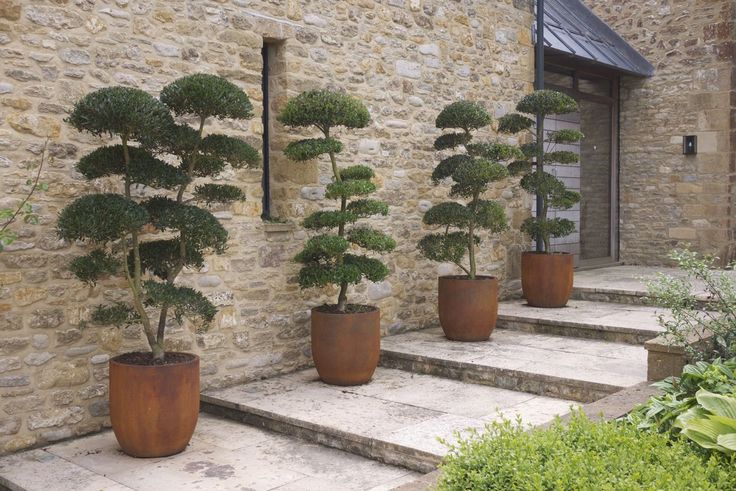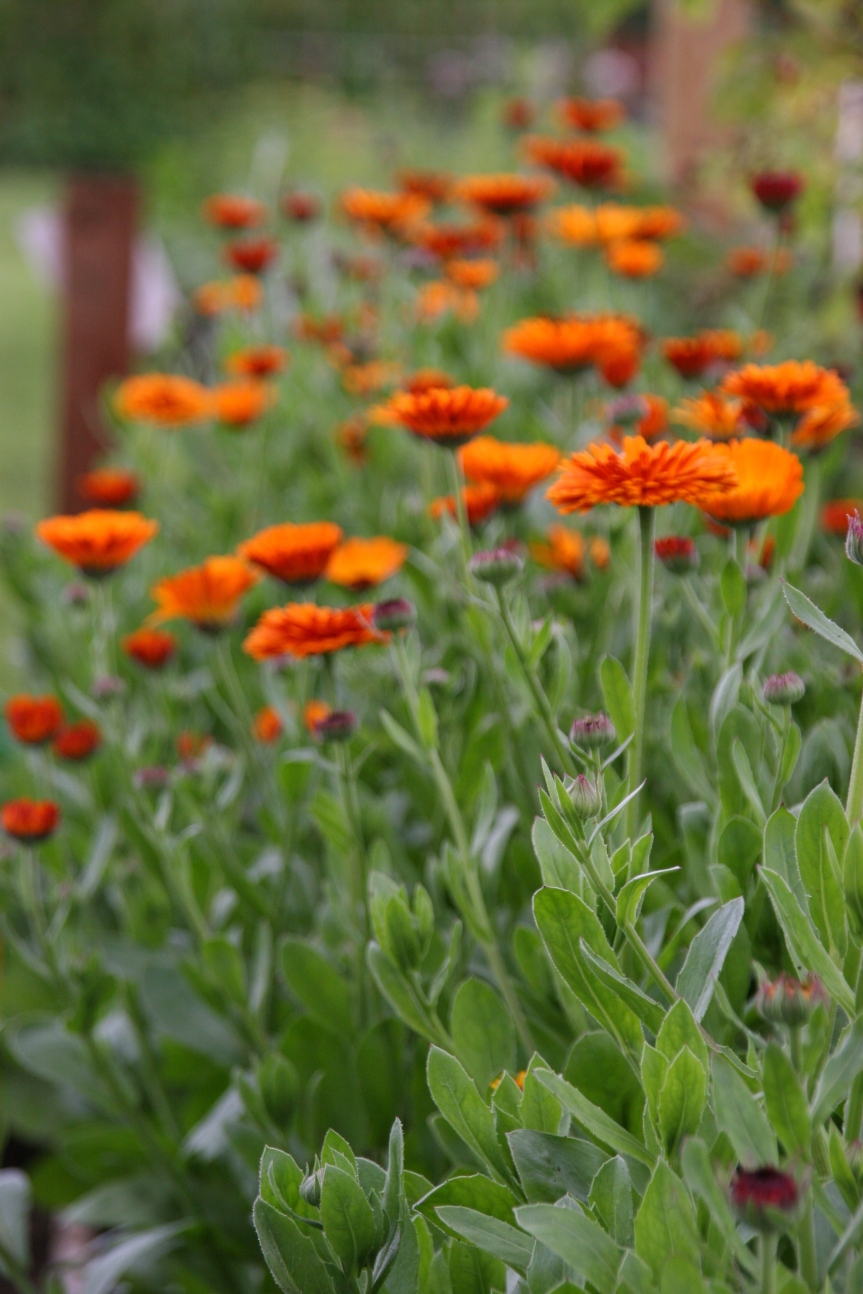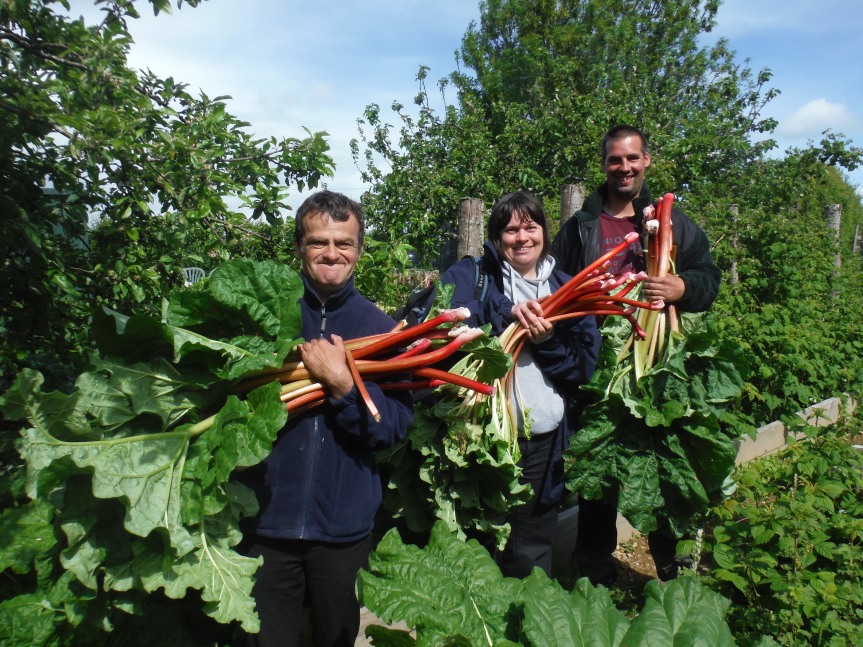We have moved our blog to http://www.thevantagepointblog.com so please update your records if you want to follow us!

The local magazine produced by local people for the local community, delivered by your local postman
We have moved our blog to http://www.thevantagepointblog.com so please update your records if you want to follow us!
Easter Egg Biscuits
Ingredients
200g (7oz) unsalted butter
200g (7oz) caster sugar
1tsp vanilla extract
1 egg, lightly beaten
400g (14oz) plain flour
Apricot jam, boiled and cooledEdibles
SK Sugar Dough: 200g (7oz) Pink, 200g (7oz) Yellow
200g (7oz) SK Sugarpaste: Bridal White coloured with Dark Green and a touch of Yellow paste food colours
SK Quality Food Colour (QFC) Pastes: Dark Green and Yellow
SK Quality Food Colour (QFC) Dusts: Orange and Yellow
SK Professional Dust Food Colour: Rose
80g (2¾oz) SK Instant Mix Royal IcingEquipment
2 x large baking trays
Easter egg (or oval) cookie cutter
Round cutters: 6mm (¼”), 9mm (3/8”), 1.2cm (½”), 1.5cm (5/8”)
Piping nozzles: 2 x nos. 1.5Makes 24
1. Place the butter, sugar and vanilla extract into an electric mixer and cream them together until well-combined and creamy. Avoid over-mixing as this will cause the biscuits to spread as they are baking.
2. Add the egg until well combined, then turn the mixer down to the lowest setting and add a little of the flour. Gradually add all the flour and mix until a dough is formed.
3. Preheat the oven to 190°C/170°C fan/375°F/gas mark 5.
4. Roll the dough out on a lightly floured surface to 5mm (¼”) thick. Line a large baking tray with parchment paper, place the biscuit dough onto the tray and refrigerate for 30 minutes.
5. Cut out 24 egg shapes using the egg- or oval-shaped cookie cutter.
6. Place the cookies on two baking trays lined with parchment so they are not touching then bake in the oven for 10–15 minutes. The biscuits should be slightly brown around the edges when baked. Leave to cool.
7. Brush the biscuits with cooled, boiled apricot glaze. Roll out the green-coloured sugarpaste to 3mm (1/8”) thick and cut out eight egg shapes from the paste. Lay a piece of sugarpaste onto each cookie and smooth down with your hands. Repeat this method with Pink and Yellow Sugar Dough to make eight pink and eight yellow egg cookies.
8. Roll out a small amount of the remaining green sugarpaste thinly and cut out a circle using each of the different-sized round cutters. Attach the green circles randomly over the pink eggs using edible glue.
9. Make up the royal icing according to the packet instructions and divide it into two bowls. Colour one half with Rose dust food colour and the other half with Yellow and a spot of Orange dust food colours.
10. Fit a small piping bag with a no. 1.5 nozzle and fill 2/3 with pink royal icing. Starting from the left and piping one line at a time, pipe a crisscross pattern over the yellow cookies. Pipe loops across the middle of each of the green cookies in pink royal icing.
11. Fit another small piping bag with a no. 1.5 nozzle and fill 2/3 with yellow royal icing. Pipe zigzag lines above and below the pink line on the green cookies.
You can get all your cake decorating supplies from Squires Kitchen at
http://www.squires-shop.com or pop in store at 3 Waverley Lane, Farnham.
‘Hoppy Easter’ Cupcakes
Ingredients
175g (6oz) butter (or margarine)
175g (6oz) caster sugar
3 medium eggs
175g (6oz) self-raising flour
1tsp vanilla extract
Apricot jam, boiled and cooledEdibles
SK Sugarpaste: 72g (2½oz) Bridal White, 220g (7¾oz) Bridal White coloured with Dark Green and a touch of Yellow paste food colours
20g (¾oz) SK Pink Sugar Dough
1 pack SK Sugar Florist Paste (SFP): Pale Yellow with a touch of Orange paste food colour
SK Quality Food Colour (QFC) Pastes: Dark Green, Orange and Yellow
SK Edible Glue
Small amount of SK Instant Mix Royal IcingEquipment
12 x SK Dotty Cupcake Cases in Pink, Spring Green and Yellow
12-hole muffin tin
6cm (2 3/8”) round cutter
Small blossom cutter
Piping nozzle: no. 1Makes 12
1. Preheat the oven to 180°C/160°C fan/350°F/gas mark 4.
2. Cream the butter (or margarine) and sugar together in an electric mixer.
3. Slowly add the eggs, then the flour and vanilla and mix until fully combined. Make sure you scrape the bowl with a spatula between mixing.
4. Place the cupcake cases in a muffin tin and spoon approximately 50ml (1¾fl oz) of mixture into each one. Bake in the oven for 20–25 minutes.
5. Once the cakes are baked and spring back to the touch, take them out of the tin immediately. Leave to cool before decorating.
6. Brush the top of each cupcake with a little cooled, boiled apricot glaze. Roll out the yellow-green sugarpaste to a 3mm (1/8”) thickness and cut out twelve 6cm (2 3/8”) circles of paste. Place these onto the cupcakes and smooth them down with the palm of your hand.
7. Shape 4g (just under ¼oz) of Bridal White sugarpaste into a long teardrop shape for the bunny’s ear. Flatten it slightly with the palm of your hand and taper the top of the ear into a point. Roll out a small amount of Pink Sugar Dough and cut out an inner ear shape. Attach it in the centre of the ear with edible glue.
8. Make another ear in the same way but fold it over in the middle. Trim the bottom of each ear straight and use edible glue to attach them to the cupcake. Repeat to make 11 pairs of ears for the remaining cupcakes.
9. Roll out the yellow SFP thinly and cut out 36 little blossoms. Pipe a small dot of royal icing into the centre of each flower using a no. 1 nozzle. Stick one to the straight ear with edible glue. Secure the remaining blossoms over the top of the cupcakes.
You can get all your cake decorating supplies from Squires Kitchen at
http://www.squires-shop.com or pop in store at 3 Waverley Lane, Farnham.
From the car park on the right-hand side of the road (walking away from the A25), walk further along Flanchford Road, taking a path just off the road and parallel to it. When you reach a point where you can see a windmill up on the hill to your right, take the path up to it and emerge in a golf club car park. Turn left and walk a few yards to find a footpath branching off right and down a slope to cross a fairway. Head towards a lone house and take the track running away from the golf course and along its left-hand side. At a junction by a stream (the Mole) turn left. Reach Dungates Farmhouse and turn left down a path at its far side.
Follow this path down through fields to reach a mill pond and Wonham Manor (a converted mill) and a road. Go left for a few yards to take a footpath out right. Follow this through a field, passing pill boxes on the right and on the left. In the next field stay on the left-hand side, ignoring a gap on the left by a power line pole. Beyond it, reach a gate/stile on the left and go through onto a track. Turn right. Ignore a footpath left which goes up a few steps. Instead, stay on the wide track to reach and cross the Rice Bridge footbridge. At a 3-way signpost on the other side, take the left-most option, staying close to the trees. Follow this as it strikes out across a field.
On the other side go through a gap and over a stile and another footbridge. Head out to pass the right-hand side of a lone oak and continue forward to reach a kissing gate in a hedge. Go half-left over the next field (see a small barn over to your left) and take a stile, right, into the next field. Walk along the right-hand edge of this and the next field. Emerge on a wide track leading to a road, emerging next to Hillview Farmhouse. Go straight across the road and cross a field. On the far side go over a stile and a plank footbridge then turn right to walk along the edge of the next field. Go through a gap and then head out half-left to the far corner of a large field to reach a kissing gate onto a road. Turn left and walk a few yards to the church, the green and the Plough pub in Leigh and to a phone box displaying a history of the village.
Take a footpath left, into the churchyard and past the church. Go out of the back along a corridor which emerges in a field. Cross this field slightly right to reach and cross a footbridge in trees. Continue forward to emerge in a large field. Turn right and walk along the edge until reaching a stile on the right which takes you into another field. Turn left and walk to and through a gate then continue forward along a field edge (ignoring a stile that can be seen off to the right). Reach a gate through into a fence/hedge corridor. This widens into a grassy corridor between trees. At a T junction with a wide track turn right. Quickly reach an amazing old oak (see later) and, immediately beyond it, take a track forking left. Follow this out into a field and then turn right to walk towards the right-hand side of a large barn. Pass the barn and turn right to follow the access track which swings left to reach a tarmac drive. Turn left. Walk down to pass a 3-way signpost and, immediately beyond it, a bridge (Dabdon Bridge). About 25 yards beyond the bridge, take a path out right. This crosses a field and emerges on a road by the Three Horseshoes pub in Ironsbottom. You could picnic in the field.
After lunch, walk back across the field and over the bridge to reach the 3-way signpost that you passed earlier. Here, turn left to cross a small field. Go through a gap and half-right across the next field. Go over a double stile into the corner of another field and walk along its left-hand edge. Exit over a stile and follow the path to emerge on a drive at a 3-way signpost. Follow a bridleway sign along the drive to the right. The drive becomes a wide track then narrows. Keep going forward. Reach a T-junction with a concrete track and turn left. The concrete gives way to dirt and you quickly reach and pass once more the amazing old oak. Continue forward. The track becomes concrete again. Pass a stile/gate and then pass a high wall and some of Burys Court School’s accommodation buildings.
Just past the latter is a 5-bar metal gate on the right and, immediately beyond it, a stile right, into a field. In this field, head left, paralleling the river which is on the right-hand side. Go through a gap and then swing right a little to continue forward along the bottom of a grassy bank. Near the end of the bank, climb up left to reach a stile onto a road, opposite a house. In the road, turn right and walk to cross Flanchford Bridge. At the far side of the bridge turn right onto a track. Quickly reach a signpost forking left into a field. Cross this field a quarter right and go through a gap onto a wide track. Quickly go straight over two cross tracks and continue along the left-hand side of a field. Ignore a gap on the left and stay at the left-hand side of this field to reach and pass a house and emerge on a road. Turn left.
Walk about 300 yards along here until you can turn right, into Clayhall Lane. Again walk about 300 yards to take a footpath, through a kissing gate, left. Head out a quarter right across a field, through a gap and on across the next field. Exit through a kissing gate onto a cross track at a 4 way signpost. Here, turn left and walk down slope to reach a T-junction with a concrete track. Turn left. The track becomes broken tarmac and dirt. Reach a T-junction and turn right to walk along a wide track (ignoring an immediate yellow arrow left). Follow the track up and over a rise and down to pass the Skimmington pub. Pass a 3 way signpost and continue on, ignoring a road right, to a junction at the corner of a section of a golf course. Take the track right, passing the course and quickly reaching a bridleway forking left and into trees. Follow this to the start.
DISTANCE: 8.25 miles
OS MAPS: Explorer 146 Dorking, Box Hill & Reigate
STARTING POINT: Pass Buckland on the A25 on the way to Reigate and, just before the Black Horse pub which is on the A25 at RH2 9JZ, turn right down Flanchford Road, alongside Reigate Heath. There are car parking areas on both sides of Flanchford Road a couple of hundred yards past the houses.
REFRESHMENTS:
The Plough, Leigh
The Three Horseshoes, IronsbottomImage: Houses on Ironsbottom © Copyright Robin Webster
But before the panic sets in, visions of having to find another school at short notice, potential home schooling, not to mention new uniforms take over, it might just be worth reading this article.
A child may not want to go to school for a number of reasons. I can certainly cast my mind back 38 years and recall quite clearly not wanting to go to my Reception class on a handful of occasions. I can’t even remember why, but I do remember clinging to my mother for dear life, crying, kicking and making a noise that must have emanated throughout every corridor in the building.
I can also remember being aged 13 and getting out of the car on a Sunday night to be dropped off at boarding school and not being terribly happy about it. But to put these events into perspective, what I know now is that after all those years of attending school as a pupil, I definitely got over those occasional ‘off days’ and actually came to really enjoy the school environment. So much so that I’ve invested the last 25 years working in one as a teacher!
Whilst it is not a common occurrence in the school where I teach , there are – and I’m sure always will be – some occasions when children simply don’t want to come to school. For the parent, this can be – depending on the scene a child makes or what they say – at the very least frustrating, often upsetting and sometimes extremely worrying. Typically, these scenes tend to play themselves out when time is at a premium and everyone is rushing around determined not to be late for their morning appointments. Quite often the statement comes as a bolt out of the blue and you have absolutely no idea why your child is showing a sudden resistance to school. But rest assured, there are steps that you can take to get to the root cause of the issue – if indeed there is one at all.
So, what are the potential reasons behind your child’s clear aversion to school?
Unsurprisingly, there could be just one or just a few reasons. These include being separated from the established bond with mum who provides a sense of security and support; the change of routine which can trigger anxiety; feelings of inadequacy if they are struggling to complete a particular task / in a particular subject or friendship issues. It can sometimes even be the stark realisation that school is now part and parcel of everyday life and your child is rebelling against the fact that the freedom to choose what to do most of the day is gone. Or even something as simple as not wanting to use a different lavatory!
What is important at this stage, is how you as a parent respond when faced with a child who simply does not want to let go. Firstly, let your child know that you are in charge, not them, so be quietly assertive but stay calm. Hand your child over to the teacher quickly and do not linger (tempting I know) in the background to check that all is well. Children rarely stay unsettled for more than a few minutes but are quite capable of putting on a show if it means it might get the parents’ attention. Even the youngest children will know how to ‘press your buttons’.
Any school worth their salt will call to provide reassurance that your child has settled on the first day or two that he / she might exhibit this type of behaviour. After that, no news is good news and you can assume that your child is fine and getting on with their day. The teacher will most likely confirm this to you at pick up time.
Do talk to your child’s teacher so that you can both dig deeper and try and identify the reason behind the reluctance to go to school. You can then work together as a team to develop a strategy to deal with the problem – and then stick to it. At home, focus on talking about the positive aspects of school, create a sense of excitement about what might be happening during the upcoming week (the teacher can tell you this) and yes, possibly use simple rewards such as a play in the park (but not money or sweets) to encourage the appropriate behaviour and acceptance of the need to go to school with minimum fuss.
It’s not easy being a parent and sometimes you may find it helpful to share your experiences with other mums and dads, as most have had to deal with this type of issue at some point in their child’s life. Likewise, staff at the school will have a wealth of experience you can tap into, along with useful practical solutions to change your child’s perception of the school environment.
Getting to the bottom of what is upsetting your child is key. Once that is sorted, you can look at how to overcome the problem and soon, not wanting to go to school will be a thing of the past.
Bonsai began in China, though most believe that Japan has this honour and indeed, many of the leading masters are Japanese. The art of miniaturising trees in China is known as penjing, or pensai. This style of gardening has a rich history, and there are styles within the style of Bonsai.
The watering regime, pruning and pinching out mean that these plants are certainly not easy maintenance but the rewards are great. There are many ways of beginning a bonsai collection. Perhaps the easiest for a beginner is to buy a plant from a reputable nursery or specialist bonsai centre. However before you do so, it is well worth finding out more about bonsai.
Start your own Bonsai collection
Most trees and shrubs can be grown as outdoor bonsai. The act of restricting growth causes the leaves to become reduced in size. The pruning techniques for Bonsai are specific to the individual species of tree. Naturally small-leaved plants such as azaleas lend themselves most readily to bonsai, but bear in mind that their leaves will become smaller still. Scot’s pine (Pinus sylvestris), larch (Larix sp.), Cercis sp, maidenhair tree (Ginkgo sp.), Lonicera nitida, yew (Taxus baccata) and Japanese maple (Acer sp.) are all good for starting your collection off.
Trees for your home
Indoor bonsai are rather like houseplants. They are usually tropical or semi-tropical species and require lots of light, constant temperature and humidity, along with regular watering (as for outdoor bonsai). Depending on the species, some will lose a few old leaves in the spring to make way for some new ones; others will lose leaves in autumn/winter. Plants regularly used are Chinese elm (Ulmus parvifolia), silver jade plant (Crassula arborescens), weeping fig (Ficus benjamina), celtis (Celtis bungeana) and olive (Olea europaea).

In the clouds ‘Niwaki’
Cloud pruning is a Japanese method of training trees and shrubs into shapes resembling clouds. It is known as ‘Niwaki’, the translation of which is ‘garden tree’. The style is said to depict the distilled essence of the tree. This type of pruning does not have to be used in solely Japanese-style gardens; it can be used as a feature in gardens of many different styles.
Crafting your own clouds
You can start off with any size plant. However, there are a couple of things to consider:
Cost: small plants will generally cost less and allow for more artistic licensing. Larger plants will be more expensive yet save many years of waiting for the plant to get to the desired height.
Rate of growth: slow-growing species will take longer to reach a mature size so it might be worth buying a larger specimen or choosing another variety if time is a problem.
Plants that are cloud pruned can look very much like bonsai trees. The only difference between niwaki and bonsai is that bonsai are grown in containers and niwaki are grown in the ground. The size of the plant has nothing to do with the naming, it is purely from how it is grown. Both subjects are highly prized art forms with Japanese gardeners taking years to be qualified in this specialised area.
The Spirit of Shohin Bonsai Weekend
RHS Garden Wisley
Saturday 2nd–Sunday 3rd AprilThis spring the Sutton Bonsai Society returns to RHS Garden Wisley to present the art and beauty of Shohin Bonsai. This fascinating two day exhibition will include competition classes, demonstrations, workshops and plant sales.
These will be judged and led by Taiga Urushibata, one of Japan’s foremost young bonsai artists. Taiga will be joined by Maarten van der Hoeven, owner of Bonsai Plaza. Their participation has elevated the event to a level rarely seen outside Japan for a Shohin show.
Sutton Bonsai Society will also be offering plants for sale, special displays, care information, and a re-potting and styling service. Bring your own Bonsai to the Wisley Plant Centre on the day (from £5 per tree).
Shohin Spirit of Bonsai Weekend at RHS Garden Wisley takes place from 10am-4pm at the Hillside Events Centre. Normal garden admission applies.
Plan your visit here: https://www.rhs.org.uk/gardens/whats-on-at-rhs-gardens/whats-on-at-rhs-garden-wisley
Due to expansion and some exciting new plans, we needed more space. The new office has room for more desks, plenty of storage for all the magazines and of course more accommodation for Humphrey, seen below guarding the front door. We also now have a lovely view over the Lammas Lands through our massive window.

Big thanks to the brilliant Paul Holden from www.bizvoip.net who not only got our VOIP phones all connected up but also got our internet working with a temporary fix to help us out this week given the usual ineptitude of British Telecom.

Our new address is 9 Chestnut Suite, Guardian House, Borough Road, Godalming GU7 2AE. All other details remain the same.
If you’re looking for beautiful plants that will grow well in containers and encourage bees, hoverflies, butterflies and other precious pollinating insects to your garden, the following suggestions will help you:
Erigeron karvinskianus is such a pretty flower. It adds a delicate softness to walls, steps and other areas of hard landscaping, giving them a touch of beauty, and a delicacy that might have previously been thought impossible. It’s also a super choice for hanging baskets, containers and window boxes, flowering non-stop from early summer to the first frosts.
I love growing hardy Gerbera garvinea in containers. My plants have survived without any special care through the coldest of our winters, growing larger in size each year. They produce such an abundance of flowers that I also use them for cut flowers. With regular feeding and deadheading, my Gerbera garvinea have flowered non-stop from early spring until they have really been hammered by the frosts in winter. Gerbera garvinea ‘Sweet Surprise’ is part of a new series of hardy Gerbera that have been specially bred to provide hardy plants that produce a continuous display of flowers over three seasons. This particular cultivar has large, candy pink flowers, but you’ll find different coloured flowering Gerbera from the same series.
Thyme is another super plant to grow in containers. When you’re harvesting thyme, resist temptation to remove your stems in their entirety from the very base of the plant. Instead cut your harvest from the tips of your plant which will encourage bushy growth. There are so many varieties of thyme to choose from, varieties of Lemon thyme provide a delicious flavour in cooking, as does Orange-scented thyme.
Other worthy candidates to grow in containers to provide pollen and nectar for pollinating insects include: Lavandula angustifolia, Origanum, Cosmos, Limnanthes douglasii, Calendula officinalis, Osteospurmum, Aubrieta, Clarkia, Sarcococca, Sedum and Scabious. Single-flowered varieties provide accessible pollen and nectar – avoid double-flowered varieties. Try wherever you can to provide a continuous supply of nectar throughout the year. Look out for the ‘Perfect for Pollinators’ logo on plants at your local garden centre or nursery.

None of the plants I have mentioned here require a peat-based compost, so use a peat free alternative growing media. I’ve had excellent results using Dalefoot Composts, a range of peat-free composts made from 100% natural ingredients including bracken and sheep’s wool. Dalefoot’s wool-based potting compost is ideal for containers, the sheep’s wool that’s incorporated into this compost has naturally absorbent properties which provide extra water retention. This means that your containers require less watering which is a bonus.
If you have the choice, position your containers in a sunny spot as butterflies like the warmth and will be more inclined to visit your plants. Deadhead your plants regularly to encourage further flowering and keep your containers well watered. Avoid using any insecticides or pesticides in your garden as they are very damaging to insects and wildlife.
For inspiration, tips and advice on some lovely jobs you could do in your garden or at your allotment this month, and much more besides, please visit my website, http://www.pumpkinbeth.com.
It has been running for just over 10 years now, and started with a small group of local volunteers on a hugely overgrown allotment in Petworth. Over the years it has grown and developed, becoming wheelchair accessible, with wildlife ponds, wildflower areas, and a children’s garden area, and has run many different projects, including therapeutic horticulture sessions with adults and children with special needs.
Current projects include Tuesday ‘Learn and Grow’ sessions from 10am-2pm, supported by Comic Relief. This is a wheelchair accessible mixed group where participants can learn and enjoy organic gardening together. All volunteers work according to need and ability, enjoy a seasonal soup for lunch and everyone receives a share of the harvest at the end of the session. Fresh produce is grown year round, and partnered with Petworth Food Bank, the project offers opportunities for locals on low incomes to enjoy a share in the harvest whilst learning how to grow sustainable food at home.
Petworth Community Garden is presently looking for sponsorship towards their ‘Plot to Plate project’ for 2016, here harvest is gathered from the garden in the morning then participants learn to transform it into healthy delicious and low cost meals with help from The Organic Cookery School. Wonderful jams and chutneys and preserves from the produce are also made to sell at local events.

A Men’s Shed project runs from 10am-2pm on Wednesdays, thanks to the generosity of Petworth Community Church. Here volunteers design and create beautiful rural crafts over a cup of tea and a bowl of soup in the accessible activity shed on site. Again this is a mixed group with opportunities for all abilities, and the crafts are sold at local events with proceeds going back into the project.
Wildlife and gardening activities are run at the community garden in the school holidays, and Petworth Community Garden have created permaculture gardens in Petworth Primary School and Duncton Junior School where they run weekly eco clubs for the children. They also helped to create the amazing ‘Dragon garden’ at Graffham nursery and infant school, to help children enjoy early years gardening and play.
Petworth Community Garden is part of ‘Local Offer’, offering activities to children with extra needs, and they are partnered with Petworth Family Centre with the ‘Parent Volunteering’ programme, offering parents a variety of opportunities as a stepping stone back into working life.
The projects are always full and busy, enjoyed by a wide range of people. This spring the community garden needs to restart their Thursday group due to huge demand for the services, and are currently looking for funding towards this. They are committed to being accessible to people on low incomes and offer the services for donations only, and are looking for interested partners and sponsors.
The garden group is a great way to meet people from all walks of life, and enjoy the many and varied benefits that working in a supported community group can provide. There are people of all ages and abilities in the group and there are indoor and outdoor activities and jobs for all abilities.
For further information and volunteering opportunities, please see the websites below.
http://www.growingforall.org.uk
http://www.petworthcommunitygarden.org.uk
http://www.mensshedpetworth.org.ukPlease email petworthcommunitygarden@hotmail.co.uk or
call 07717 462780. Any donations towards the project, however small, are gratefully received at the following website:
http://www.localgiving.com/petworthcommunitygarden.
Since the opening the club has followed up with a series of Tennis Xpress courses for beginners, which proved extremely popular and really lit up the off season. It has continued to grow its junior and adult membership base, which now totals over 190. Another highlight of 2015 was the Dan Eley Foundation Charity Tournament, run in conjunction with Busbridge Tennis Association.
But GLTC isn’t just focussed on tennis. A unique new Health Promotion Tennis Project is offering people with mental and physical health conditions help with their rehabilitation through a programme of weekly group sessions. These include medical assessments, coaching and tennis themed exercise. It’s guaranteed fun in a very friendly atmosphere. The HPTP is run by Dr Chris Jagger MBE, with only an optional charge and new participants are always welcome. Email info@godalmingtennis.co.uk to book your space.
GLTC’s ethos is centred on accessibility and allowing everyone the chance to reach their potential. James Ambler, the full time coach, is on hand for advice and support, whether through individual or group lessons, or by matching up players. A former professional player, James combines great technical knowledge with an unique sense of humour!
As a not for profit Community Amateur Sports Club, GLTC operates purely for its members and the benefit of the wider community. The dedicated committee is made up of eleven highly committed men and women, many of whom also work full time. Everyone is encouraged to lend a hand where they can, including with fundraising, events, and ground maintenance. The club’s volunteers are truly what gives it its character.
Members benefit from unlimited use of the five floodlit courts and clubhouse, regular hosted club sessions, coaching, internal competitions & social events, as well as team match play. We might keep things fun and friendly, but we take our tennis seriously. Not forgetting of course, access to the annual Wimbledon ticket ballot and the opportunity to be part of a very special local institution dating back to 1937.
Pay & Play tennis is available for the general public by the hour, including floodlights for a small supplement. Just contact the Leisure Centre front desk for more details. The clubhouse activity room can be booked in the same way.

The club is right next to Godalming Leisure Centre, in Broadwater Park, a short walk from the centre of Farncombe and mainline rail station. There’s parking nearby and secure bike racks on site.
Join as a new 2016/2017 member now and get March 2016 free of charge! That’s just £149 for 13 months (or £99 for ages 19 to 27). There are further discounts for members of other Broadwater Park clubs and the leisure centre too.
If you’d like to ‘test the water’ first, you are most welcome to a free trial session. Just email Lisa at membership@godalmingtennis.co.uk for more details.
You can also visit GLTC at: http://www.godalmingtennis.co.uk or on Facebook under ‘Godalming Lawn Tennis Club’.